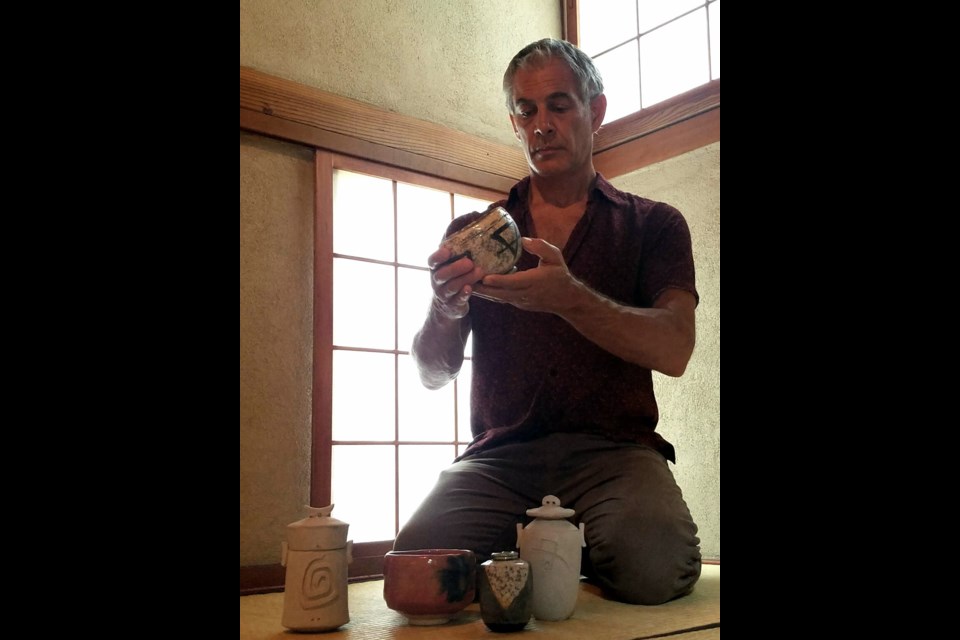Mike Ricci, fell in love with the Japanese tea ceremony in the little hut on Naropa's Arapahoe campus, the Naropa Teahouse.
Ricci, a Longmont artist, was exploring Japanese Zen Buddhism when he came across a tea ceremony class offered at the Naropa Teahouse. Ricci knew he wanted to learn more about the contemplative arts, and thought the tea ceremony was a good place to begin.
As he got deeper into learning the tea ceremony from the Urasenke lineage, he was awarded a scholarship to study in Kyoto, Japan.
As Ricci dug deeper into the tea ceremony practice, he learned about Raku, a form of ceramics characterized by removing items out of the kiln when they're very hot and cooling it quickly.
Many tea bowls are made using this method. The Raku style of pottery is intended to be both functional and aesthetically pleasing. One distinction between Raku and other styles of ceramics/pottery is that it never uses a potter's wheel — every piece is handbuilt.
Fascinated with the pottery, Ricci learned both the traditional Japanese method of Raku and the Western/American method which plays with how the red hot pieces interact with combustible items like pine needles and leaves. This often creates iridescent colors.
While Ricci does tend toward the Western style, he usually produces pieces that reflect both influences. He brings his tea ceremony background into his work, something that sets him apart from other Raku artists.
"A lot of Raku potters make tea bowls. But, not a lot of practitioners come from the contemplative art filtered through the tea ceremony, Zen, and meditation. I am heavily influenced by both styles. My tea bowls and scoops intended for the ceremony tend to be more contemplative, more subtle. However, my sculptures are wild. They take advantage of the Western-style," Ricci said.
Ricci does use his own pieces in his tea ceremonies, but it's a relatively rare occurrence.
"It's not really traditional that you would use something that you made. It's more about something that you think the guest would like," Ricci said, "Every gathering relates to a poetic thought, a Zen quote or thought and the seasons."
Ricci creates his art with Zen teachings in mind.
"This Raku practice, along with the tea ceremony tradition, made me discover and ponder what beauty is. It also helps me stay aware of the self and the other and how those two entities view what you make. It's functional art but still needs beauty and color," Ricci said.
Ricci notes that the tea ceremony takes instruction and continued practice:
"It's like studying a martial art," he said.



